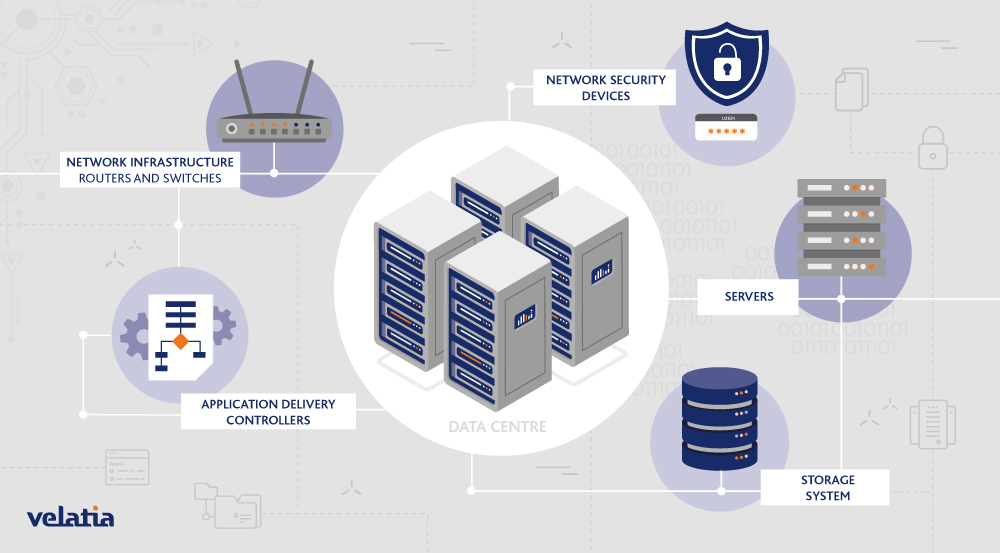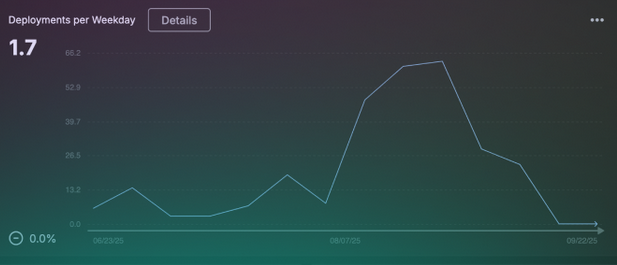Revolutionizing Database Migrations: Harness Introduces AI-Powered Natural Language Authoring
Database migration is one of the most critical, high-stakes operations in the software development lifecycle (SDLC). For decades, it has remained a largely manual, error-prone process, demanding specialized expertise and meticulous attention to detail. A single mistake in a migration script can lead to catastrophic data loss, application downtime, and significant financial repercussions. While advancements in CI/CD and DevOps have automated nearly every other aspect of software delivery, the database has often been treated as the final, fragile frontier—the “last mile” of automation that few have dared to fully conquer.
This landscape is now undergoing a seismic shift. The rise of generative AI has accelerated code creation to unprecedented levels, but it has also introduced a new challenge: the “AI Velocity Paradox.” Developers can write application code faster than ever, yet the systems responsible for testing, securing, and deploying that code, especially to the database, have struggled to keep pace. The bottleneck has simply moved downstream, creating friction, slowing down delivery, and increasing the risk of production incidents.
Harness, a leader in the software delivery platform space, is directly addressing this paradox with a groundbreaking new feature: AI-Powered Database Migration Authoring. This innovative capability aims to transform database management from a complex, code-heavy task into an intuitive, conversational experience. By allowing developers to describe schema changes in natural language, Harness is not just simplifying a difficult process; it is pioneering a future of “AI-native DevOps,” where intelligent systems understand developer intent, enforce governance, and automate delivery from the first line of code to the final database transaction.
The “AI Velocity Paradox”: Why Faster Coding Doesn’t Mean Faster Delivery
The integration of artificial intelligence into development workflows has been nothing short of revolutionary. AI coding assistants can generate boilerplate code, suggest complex algorithms, and write unit tests in seconds, dramatically boosting individual developer productivity. However, this surge in coding speed has exposed a fundamental weakness in the traditional software delivery pipeline.
According to a recent Harness study, the data reveals a startling contradiction:
* 63% of organizations report that they ship code faster since adopting AI tools. * However, a staggering 72% have suffered at least one production incident directly caused by AI-generated code.
This is the core of the AI Velocity Paradox: we are creating code faster, but deploying it more recklessly. The speed of code generation is outstripping our ability to validate, secure, and manage its impact on production systems. The result is a frustrating cycle where initial velocity gains are erased by lengthy debugging sessions, emergency rollbacks, and a pervasive fear of deployment.
The problem lies in the siloed nature of AI assistance. A coding tool may generate perfect application logic, but it lacks the context of the entire delivery ecosystem. It doesn’t understand the existing database schema, the company’s security policies, the compliance requirements, or the intricate dependencies within the CI/CD pipeline.
To truly unlock the potential of AI, its intelligence must extend beyond the developer’s IDE and permeate the entire SDLC. A recent survey underscores this necessity, with 83% of leaders agreeing that AI must be integrated across the full lifecycle to be effective. This is precisely the gap that Harness aims to close, starting with one of the most significant bottlenecks: the database.
Bridging the Gap: The Persistent Challenge of Traditional Database Migrations
For any seasoned developer or database administrator (DBA), the process of managing schema changes is fraught with complexity and risk. It’s a discipline that combines deep technical knowledge with procedural rigor, and for most organizations, it remains a stubbornly manual endeavor. The traditional approach relies on a patchwork of SQL scripts, spreadsheets, and late-stage human approvals—a system ripe for error.
Let’s examine the common pain points of this legacy process:
- Manual SQL Scripting: Developers must meticulously hand-craft SQL scripts for every schema change. This requires in-depth knowledge of specific SQL dialects (e.g., PostgreSQL vs. MySQL vs. Oracle), an understanding of backward-compatible changes to avoid application downtime, and the foresight to anticipate performance implications.
- Complex Review Cycles: Once a script is written, it enters a lengthy review process. DBAs, senior engineers, and security teams must scrutinize every line, checking for correctness, adherence to company standards, and potential security vulnerabilities. This creates a significant time lag and often involves tedious back-and-forth communication.
- Disconnected Tracking: How are migrations tracked? All too often, the answer is a combination of spreadsheets, wiki pages, and Jira tickets. This decentralized system makes it incredibly difficult to know which script has been applied to which environment, leading to configuration drift and deployment failures.
- The Rollback Nightmare: Creating a rollback plan is just as important as the migration itself. Developers must write a corresponding “down” script to reverse the changes if something goes wrong. This is often an afterthought, poorly tested, and incredibly stressful to execute under the pressure of a production outage.
This manual, fragmented process not only slows down development but also places an enormous cognitive burden on teams and introduces significant business risk. Harness’s new feature is designed to dismantle this old paradigm entirely.
Introducing Harness’s AI-Powered Database Migration Authoring
Harness is introducing a new paradigm that it calls “vibe coding”—a shift from imperative commands to declarative intent. Instead of telling the system how to change the database by writing precise SQL, developers simply tell it what they want to achieve using plain English.
The AI-Powered Database Migration Authoring feature, a core component of the Harness Database DevOps module, allows users to describe their desired schema modifications in natural language and receive a production-ready, validated, and fully reversible migration.
Consider this example prompt a developer might provide:
“Create a table named
animalswith columns forgenus_speciesandcommon_name. Then add a related table namedbirdsthat tracksunladen_airspeedandproper_name. Add rows for Captain Canary, African swallow, and European swallow.”
This simple, human-readable request triggers a sophisticated, automated workflow within the Harness platform, transforming intent into a safe and reliable database deployment.
How It Works: From Natural Language to Production-Ready Migration
What happens behind the scenes is far more than a simple text-to-SQL conversion. The Harness platform orchestrates a comprehensive, context-aware process to ensure the migration is not just syntactically correct, but also safe, compliant, and aligned with DevOps best practices.
The workflow can be broken down into several key stages:
- Analyze Current Schema and Policies: The AI doesn’t operate in a vacuum. It first analyzes the current state of the target database schema. It understands existing tables, columns, relationships, and constraints. Simultaneously, it consults pre-defined organizational policies, such as naming conventions, data type restrictions, and security rules.
- Generate a Backward-Compatible Migration: Armed with this context, the AI generates the necessary SQL script. Crucially, it prioritizes creating a backward-compatible migration to prevent breaking the currently running application. For example, it knows to add a new column as nullable first, allowing the existing code to function, before a subsequent migration makes it non-nullable after the application code has been updated.
- Validate for Safety and Compliance: The generated script is automatically validated against a battery of checks. Harness ensures the change won’t cause data loss, violate security policies, or run afoul of compliance standards. This automated governance gate is a critical step that replaces error-prone manual reviews.
- Commit to Git for Testing: Once validated, the migration script is committed to the team’s Git repository. This action treats database schema changes just like application code—it is version-controlled, auditable, and subject to the same CI pipeline. Committing to Git automatically triggers the established testing workflows, ensuring the migration is vetted in staging environments before it ever reaches production.
- Create Automatic Rollback Migrations: The platform simultaneously generates the corresponding rollback (or “down”) migration. This completely eliminates the manual, often-neglected task of writing reversal scripts. With an automated and tested rollback plan in place, teams can deploy database changes with confidence, knowing they have a reliable safety net.
This end-to-end automation represents a monumental leap forward, transforming a high-risk, manual task into a streamlined, policy-driven component of the CI/CD pipeline.
A Tale of Two Migrations: Traditional vs. AI-Powered
To fully appreciate the impact of this innovation, a direct comparison is illuminating.
| Feature | Traditional Database Migration | Harness AI-Powered Migration |
|---|---|---|
| Authoring | Manual SQL scripting, requiring deep database expertise and significant developer time. | Natural language prompts describing the desired outcome, accessible to all developers. |
| Validation | Relies on manual peer reviews, DBA approvals, and institutional knowledge. Often late in the cycle. | Fully automated safety, compliance, and policy checks are performed instantly. |
| Rollbacks | Manually written “down” scripts, which are frequently an afterthought and may be untested. | Automatically generated, version-controlled, and tested rollback migrations. |
| Process | Disconnected and fragmented; tracked via spreadsheets, tickets, and wikis. | Fully integrated into the Git workflow and the CI/CD pipeline, treating schema as code. |
| Risk Profile | High risk of human error, deployment failures, production downtime, and data corruption. | Significantly lower risk due to automated governance, validation, and reliable rollbacks. |
| Developer Focus | Writing boilerplate SQL, navigating database intricacies, and managing the review process. | Describing business logic and the functional requirements of the schema changes. |
The Technology Behind the Magic: Software Delivery Knowledge Graph
This intelligent automation is powered by Harness’s sophisticated underlying architecture. Two key components make this possible:
- Harness Software Delivery Knowledge Graph: This is the “brain” of the platform. It maintains a comprehensive model of the entire software delivery lifecycle, understanding the relationships between code repositories, artifacts, CI/CD pipelines, cloud environments, deployed services, and now, database schemas. This rich, interconnected graph provides the AI with the critical context it needs to make intelligent, safe decisions.
- MCP Server: This is the engine that translates intent into action. It leverages the Knowledge Graph to understand the user’s database, pipelines, and built-in best practices, orchestrating the entire workflow from prompt to deployment.
This is not merely a thin wrapper around a large language model. It is a deeply integrated, context-aware system designed specifically for the rigors of enterprise software delivery.
A Vision for the Future: AI-Native DevOps and the Last Mile
Harness’s introduction of AI-Powered Database Migration Authoring is more than just an incremental feature release; it signals a fundamental shift toward an era of AI-native DevOps. In this new paradigm, systems are designed from the ground up to understand developer intent, proactively enforce policy, and automate the entire delivery path from code to cloud to database.
For too long, the database has been the final, stubborn obstacle to achieving true end-to-end automation. It has been the “last mile” of DevOps, a complex and risky domain that has resisted the full embrace of CI/CD principles. By extending AI-powered automation and governance to this critical area, Harness is finally helping organizations complete that journey.
This move empowers development teams to take ownership of their database changes without needing to be DBA experts. It frees up DBAs from routine, manual script reviews, allowing them to focus on more strategic initiatives like performance optimization, architecture, and data strategy. Most importantly, it allows businesses to innovate faster and more safely, resolving the AI Velocity Paradox by ensuring that accelerated coding translates directly to accelerated, reliable delivery of value to customers.
The future of software development is one where the friction between idea and execution is minimized. It’s a future where developers can focus on solving business problems, confident that an intelligent platform is handling the complex mechanics of delivery. With this bold new capability, Harness is not just building a tool; it is laying the foundation for that future.








Comments